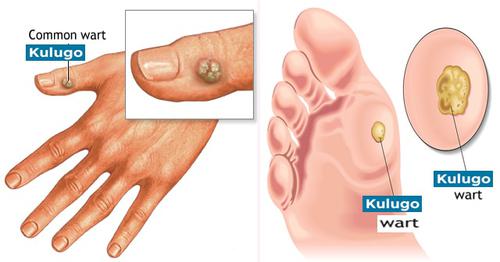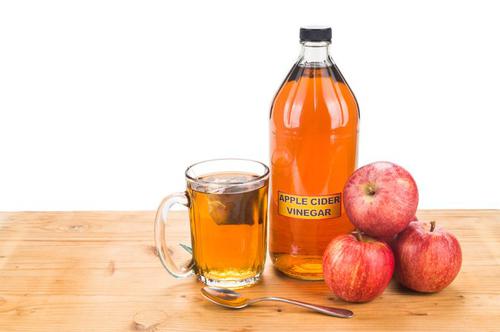Best Ways to Use ACV to Treat Warts
Warts can be defined as a condition that affects the skin to cause some tumor-like, raised bumps. Warts are caused by a human virus called human papillomaviruses (HPV). It is a contagious virus that has no cure, but apple cider vinegar (ACV) can be used for removing wart due to its acidic nature. The following are wart types:
- Dome-shaped wart: Mostly affect fingers, knees, and toes
- Plantar wart: found on the foot surface
- Flat wart: found in large numbers as raised flat skin surface on legs, face and other body surfaces
- Periungual type: mostly affect the surface around nails, and lastly
- Filiform warts: which appear on the as face long stalks
How to Use ACV to Treat Warts
Why should you stick to paying for drugs like salicylic acid, when you have ACV to treat warts? ACV works perfects to remove wart without using those over the counter drugs. People constantly have queries about this remedy but it works perfectly. The trick is following the correct step-by-step procedure as highlighted below but under professional's guidance.

1. Step-to-step guide
-
Gather all ingredients: The first step is making sure you have all the ingredients. They are: organic apple cider vinegar, adhesive pads, sterile cotton balls, a mixing bowl, and petroleum jelly and water to dilute the acid (optional). If a variation is needed, aloe vera, vitamin C, and baking soda can be included.
-
Blending: Here the ACV is poured into a clean bowl for ease cotton ball soaking. Add some water to dilute the acidic nature of ACV (optional) but note the higher the concentration the better the results (too concentrated ACV can burn the skin; moderate content is key).
-
Clean the wart and the area around it: This should be done carefully to avoid breaking the wart-infected area or the skin around it (warts can easily spread to the breaks).
-
Apply petroleum jelly to the surrounding healthy skin: This helps to protect your skin from being burnt by the ACV. ACV works by burning the warts tissues.
-
Add drops of ACV to a cotton ball: Or else you can soak the ball in the ACV to carry enough.
-
Apply the cotton ball directly on top of the wart: Ensure that the whole wart is fully covered by the cotton. For better results, this should be done when going to sleep because during the night people are less mobile.
-
Use of adhesive bandage: The adhesive band is used to hold the ACV cotton on the wart. Ensure the cotton is well held. Duct tapes also can be used.
-
Cotton removal: In the morning, remove the cotton ball. This process should be repeated until the wart is fully removed.
2. Which are the risks associated with ACV usage?
Caution should be observed. ACV for treating warts does not work for everyone equally.
-
May cause an allergic reaction: An allergic reaction may erupt due to the confliction of skin composition and ACV to cause an allergic reaction.
-
Has the potential to cause damage to the skin: Although the acetic acid contained in ACV is weak, it has an effect on the skin. It can cause skin burn. That is why petroleum jelly is used to protect the skin or water used to dilute it if need be.
-
ACV is not good for certain body parts: ACV is an acid, so should not be used on warts that are on genitals, around eyes, open wounds, and other sensitive parts. It can cause cell degeneration on open wounds and severe pain on sensitive areas like eyes. It is not also good for children's skin.
If cracked or open skin and bleeding are experienced when using ACV to treat wart and severe swelling or pain, a doctor should be consulted immediately. Meaning, keeping a careful eye on the areas being treated is crucial.

Additional Home Remedies for Removing Wart
Apart from ACV, there are other effective home remedies.
-
Duct tape: In this remedy, a wart is covered with a duct tape for one week. After the week is up, remove the duct tape and soak the wart-infected area in water. Then use a pumice or emery board to rub the wart-affected area to remove the dead cells or tissues. Keep this up until the warts are removed completely.
-
Freezing: This involves the use of a freezing aerosol spray bought over the counter or found with doctors. The spray works by freezing the wart tissues to negative 90 Fahrenheit, a temperature that kills wart tissues. After some time, the blister left falls off by itself, leaving some wart tissues, or a doctor uses a scalpel or laser to remove the blister.
-
Banana peel: Banana peel can heal warts. Small pieces of the fleshy peel parts (enough to cover the wart surface), are used. The trick is they should remain there overnight or throughout the day. After every night or day, the peel should be changed until the wart is healed.
-
Garlic: Cut the garlic into pieces, apply the juice on the wart and cover warts with those pieces overnight using a medical tape. The process should be repeated for about three to four weeks.
-
Oil-rich plants and herbs: Some oil plants like tea tree, lemongrass, and Podophyllum have antiseptic and antiviral properties that are used to kill HPV viruses. But podophyllum is not to be used by nursing or expectant mothers, as its side effects are not good for them.
ACV is a readily available remedy. Try it first, before opting for those expensive treatments. Although there is not much scientific research proving how it works on warts, its usage has proved to be effective. The above reference guidelines are worth following but remember, a doctor's advice before trying them is essential.
YOU MAY LIKE
-
Top 7 Natural Remedies for Dry Eyes
-
Top 3 Foods to Consume for Stomach Ulcer Treatment at Home
-
Best Ways to Use Apple Cider Vinegar for Yeast Infection
-
The Best Home Remedies for Sore Throat: Get a Relief Now!
-
Massaging the Pressure Points on Your Feet Will Surprise You!
-
Acupressure and Natural Remedies for Treating Headaches
-
7 Most Important Acupressure Points
-
The Best Warts Home Remedy: Tea Tree Oil
-
The Best Guide to Treat an Ear Infection at Home
-
Is Peppermint Tea an Effective Solution to Stomach Ailments?
